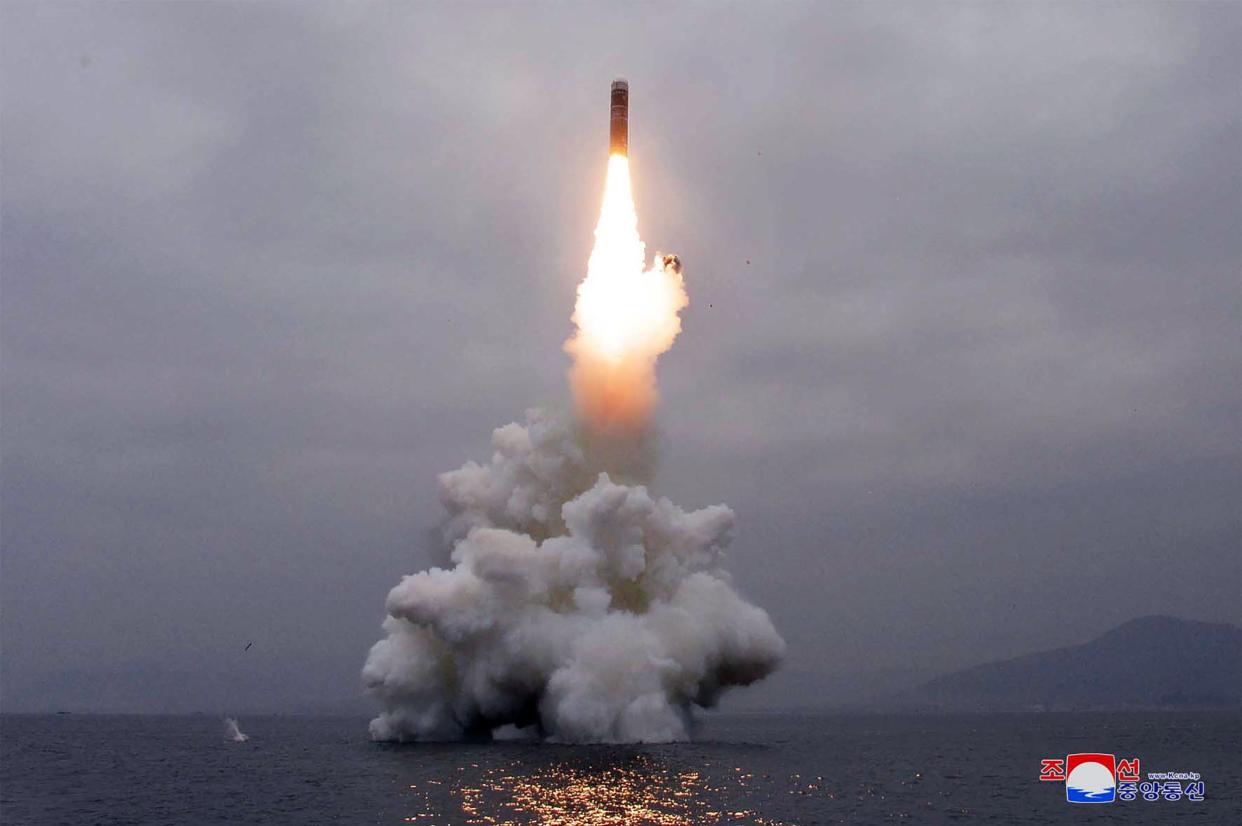North Korea tests submarine-launched missile a day after saying it will resume nuclear talks with US

North Korea said Thursdaythat it had successfully test-fireda new submarine-launched ballistic missile off its eastcoast, the Korean Central News Agency reported.
The launch North Korea's11th such weapons test this year came one day after North Korea announced it would resume nuclear talks with the U.S.
The solid-fuel, Pukguksong-3was launched from waters off the coastal town ofWonsan on Wednesday, according to KCNA, the official North Korean news agency.
The missile was reportedlylaunched from a platform at searather than from a submarine, according to the BBC.
Related Video: Bolton Bleak on North Korea in First Speech Since Ouster
North Korean leaderKim Jong Un sent "warm congratulations"to thetest team, KCNA reported.
South Koreas military said themissile traveled about 280 milesat a maximum altitude of 565 miles, or more than twice as high as the orbiting International Space Station.
Although North Korea said the missile testhad no adverse impact on the security of neighboring countries, Japan lodged an immediate protest, saying the missile landed inside its exclusive economic zone for the first time since November 2017.
TheState Department called on North Korea to refrain from provocations, abide by theirobligations under U.N. Security Council resolutionsand remain engaged in substantive and sustained negotiations to do their part to ensure peace and stability on the Korean Peninsula and achieve denuclearization.
President Donald Trump, who did not commenton the latest launch, has played down the North's previous weapons tests involving short-range projectiles. He has said the North Korean leader has not broken an agreement made in the U.S.-North Korean summit in June last year.
The development of highlymobile, submarine-based missiles represent a bigger threat to the U.S. and its allies than land-based missiles because they are harder to detect in time to respond.
Thereport saidthe projectile was fired in a "verticaltrajectory" instead of in a more traditionallaunch-angle that would travel farther.
If fired at a standard trajectory, the missile could have traveled 930 to 1,240 miles, said Kim Dong-yub, an analyst from Seouls Institute for Far Eastern Studies, in a Facebook post, according to The Associated Press.
Shin Jong-woo from the Korea Defense and Security Forum in Seoul said the missile appeared similar to a Chinese JL-2 SLBM, indicating that North Korea aims to develop a submarine-launch missilethat cancarry three to eight warheads,South Korea'sYonhap news agency reported.
The test-firing came as North Korea's chief nuclear negotiator, en route to working-level talks in Sweden with the U.S., expressed "high expectations and optimism" over the discussions.
"As the U.S. side sent a new signal, I bear high expectations and optimism, and I am also optimistic about the results,"Kim Myong-gil told reporters at Beijing International Capital Airport.
Former national security adviser John Bolton, in his first remarks since leaving the Trump administration in early September, said Monday that Kim has no intention of giving up nuclear weapons.
The strategic decision Kim Jong Un is operating through is that he will do whatever he can to keep a deliverable nuclear weapons capability and to develop and enhance it further, Bolton said in remarks at the Center for Strategic and International Studies. Under current circumstances, he will never give up the nuclear weapons voluntarily.
Contributing: The Associated Press
This article originally appeared on USA TODAY: North Korea successfully tests submarine missile; Japan protests

